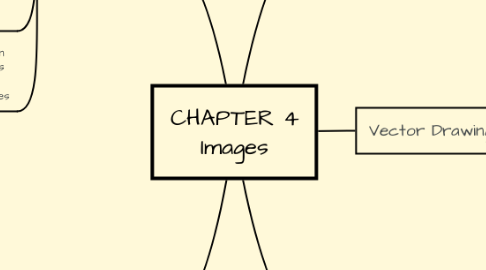
1. BItmaps
1.1. - simple matrix of the tiny dots that form an image and are displayed on a screen or printed. - can have varying bit and color depths. - suited for creation of p Photo-realistic images & Complex drawings requiring fine detail
1.2. Sources - Camera - Using a scanner to digitize image. - from scratch with a paint or drawing program. - clip arts, photo-graph suppliers. - Download - Libraries of clip art
1.3. Legal Right Protection - Public Domain Images - Royalty-fee Images - Right managed Images
2. Color and Palettes
2.1. Addictive Color - created by combining colored light sources in three primary colors - red, green, and blue (RGB). - TV and computer monitors
2.2. Subtractive Color - Combining colored media such as paints or ink. - Colored media absorb some parts of the color spectrum of light and reflect the others back to the eye. - Create color in printing. - Printed page consists of tiny halftone dots of three primary colors: cyan, magenta, and yellow (CMY).
2.3. Dithering
2.3.1. - Process whereby the color value of each pixel is changed to the closest matching color value in the target palette. - Done using a mathematical algorithm.
3. Making Still Images
3.1. Image editing programs enable the user to: - Enhance and make composite images - Alter and distort images - Add and delete elements - Morph, allow to smoothly blend two images so that one image seems to melt into the next
4. Vector Drawing
4.1. Used Area
4.1.1. - Computer-aided design (CAD) programs - Graphic artists designing for the print media - 3-D animation programs - Applications requiring drawing of graphic shapes
4.2. How Its Work
4.2.1. - vector is a line that is described by the location of its two endpoints. - Makes use of Cartesian coordinates. - Cartesian coordinates are numbers that describe a point in two- or three-dimensional space as the intersection of the X, Y, and Z axes.
5. 3D Drawing
5.1. Tools - Daz3D - Form*Z - NewTek′s Lightwave - Autodesk’s Maya - Trimble’s SketchUp
5.2. Features
5.2.1. * Modeling - Placing all the elements into 3-D space. * Extrusion - The shape of a plane surface extends some distance. * Lathing - A profile of the shape is rotated around a defined axis.
